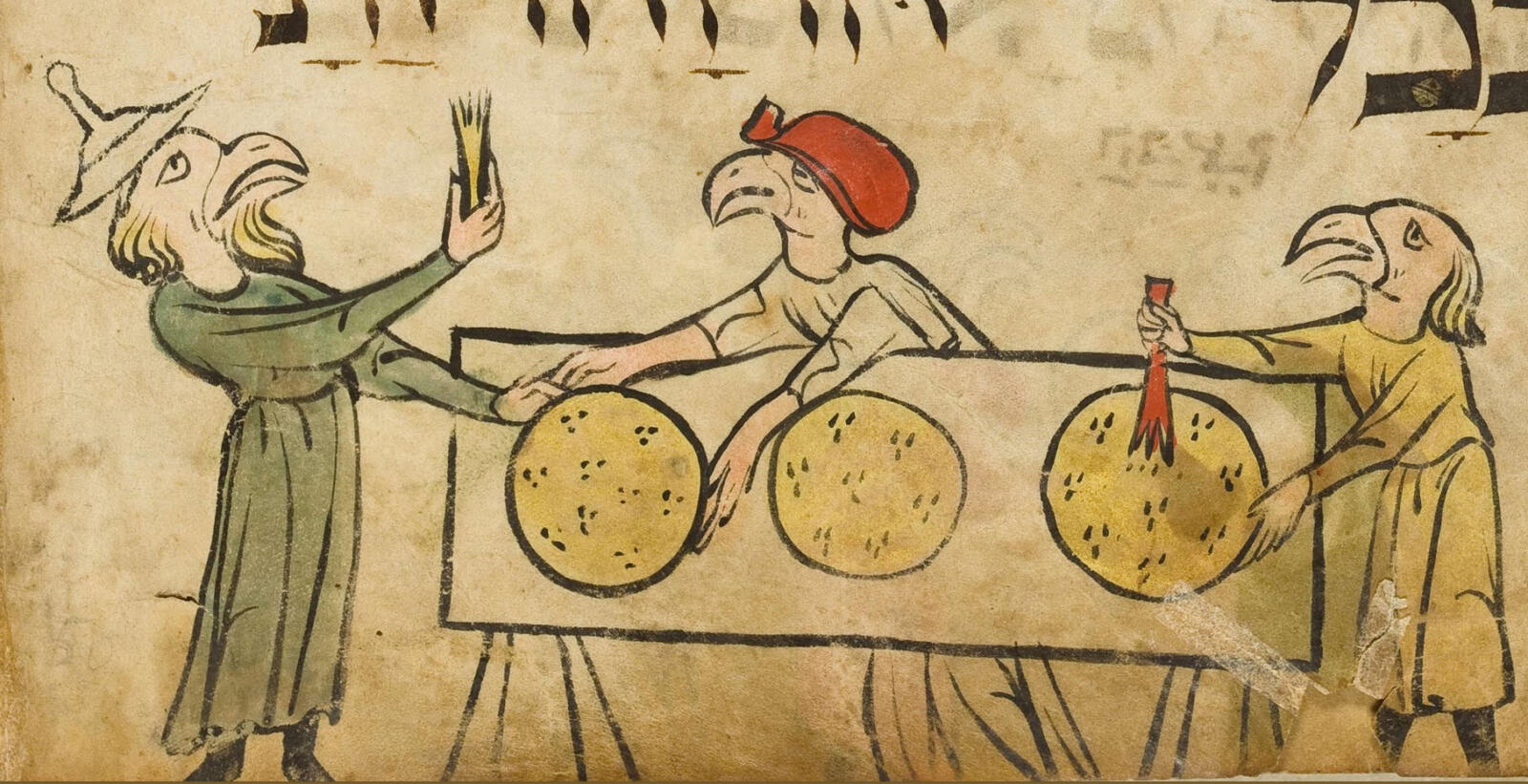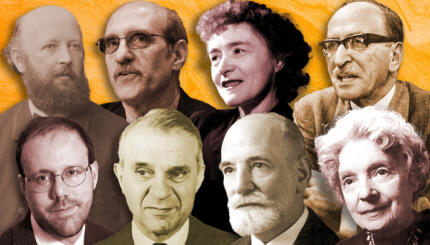A guide to Jewish headwear in the Middle Ages.
Hats Were In by The 12th Century
In general, Jews in European countries did not wear any clothing that was distinctive or different from that worn by their Christian neighbors, though perhaps they dressed somewhat more lavishly, particularly the women. The one exception to this, peculiarly, was the so‑called Jewish hat. Much ink has been spilled in attempts to explain this curious phenomenon and to give fanciful, and wrong, explanations and descriptions.
Jewish custom, which only in the early modern era became law, and only then for Ashkenazic Jews, was that males should cover their heads, especially at synagogue services and often (though not universally) while studying. At some period it became customary to wear a cap or hat at all times, at least outdoors. We do not know when this custom developed, but Isaac B. Moses Or zarua of Vienna (ca. 1180-ca.1250) already mentioned the hat of the Jews.
Lacking iconographic or other evidence for an earlier period, all that we can say with certainty is that by the mid‑thirteenth century Jews were wearing hats, often simply a soft cap with a peak, but also what appears (in manuscript illuminations) to be a hat of stiff material with a distinctive point on the top.
 We have already noted the pointed caps worn by Babylonian (Persian) Jews*, and it is not unlikely that this custom survived among northern European Jews; however, the “harder” hat version may have been the result of special legislation, certainly in Germany, and probably in England and France, requiring Jewish men to wear such hats. Drawings in 13th‑century German law codes show Jews bearded and wearing such hats, and these early laws specifically mentioned that they must wear them on leaving the synagogue and when taking oaths.
We have already noted the pointed caps worn by Babylonian (Persian) Jews*, and it is not unlikely that this custom survived among northern European Jews; however, the “harder” hat version may have been the result of special legislation, certainly in Germany, and probably in England and France, requiring Jewish men to wear such hats. Drawings in 13th‑century German law codes show Jews bearded and wearing such hats, and these early laws specifically mentioned that they must wear them on leaving the synagogue and when taking oaths.
Points, Horns and Straps
The provincial council of Breslau enacted a provision (1267) requiring Jews to wear “the horned hat” that they earlier had been accustomed to wear, but that they had “presumed in their temerity” to stop wearing (this law applied also to Poland). In some manuscript drawings a cap, unpointed, may be seen secured around the chin with cloth or a strap (a clear example of such a strap may be seen in the late‑13th‑century seal of a Jew of Regensburg). The explanation for this seems to be found in a responsum of Meir B. Barukh of Rothenburg (ca. 1220‑1293), who ruled that it is permissible to go out in the street on the Sabbath wearing tall hats that cannot be blown off by the wind, even though the brim protrudes in order to cover the wearer from sun or rain (it is nonetheless not considered a “tent” which would be forbidden), but those that are not so secure on the head must be attached with a strap. [Rabbi Meir of Rothenburg was the foremost Ashkenazic talmudic and legal authority of his time.]
The hats appear to have been made from cloth, although some have suggested metal in certain cases. Israel Isserlein (1390‑1460) wrote about hats woven of straw and whether they are suitable as head covering for prayers. Jews sometimes adopted the “Jewish hat” as a prominent feature of their personal seals. Some French illuminators show a wide variety of Jewish hats, including one in a sky blue color with a small brim and soft pointed peak (in colors such as pink and bright red-orange), and a black hat with a wide brim and no peak at all.
Spain and Italy Were Exceptions
Jews in Spain did not wear this special “Jewish hat” at any time. In Aragon-Catalonia, at least in the thirteenth century, it was customary to wear a kind of hood with the point flopping down in the back and to the side. Although some sources refer to “distinctive dress” worn by Jews in Italy (to differentiate them form Christians), contemporary illustrations show no evidence of this, nor was the hat worn there.
* As the famous reliefs of the Dura‑Europa synagogue [built around 245 C.E. in present-day Syria] demonstrate, Jews in the Persian Empire wore a mixture of Greek and Persian clothing. The so‑called Jewish hat of medieval Europe (chiefly in Germany, France, and England) appears actually to have originated in the Persian hat, soft and with a brim and slight conical point on top. This may be seen also in the Dura paintings, as well as in a sixth‑century (C.E.)Egyptian wall painting portraying the miraculous story of the three children saved from the furnace (Daniel 3.21) and in pottery figurines from China (ca. 618-907) representing, presumably, Jewish merchants.
Reprinted with permission from the author.



